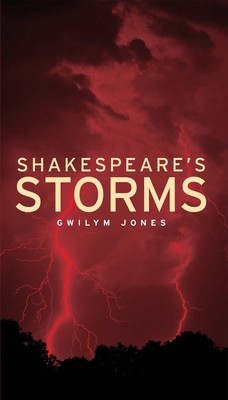
- We will send in 10–14 business days.
- Author: Gwilym Jones
- Publisher: Manchester University Press
- ISBN-10: 0719089387
- ISBN-13: 9780719089381
- Format: 14 x 21.6 x 2.3 cm, hardcover
- Language: English
- SAVE -10% with code: EXTRA
Reviews
Description
This is the first comprehensive study of Shakespeare's storms. Whether the apocalyptic storm of King Lear or the fleeting thunder imagery of Hamlet, the shipwrecks of the comedies or the thunderbolt of Pericles, there is an instance of storm in every one of Shakespeare's plays.
This book explains the special effects used to represent storms in the early modern playhouses, and details how those effects filter into Shakespeare's dramatic language. With chapters on Julius Caesar, King Lear, Macbeth, Pericles and The Tempest, Jones traces the development of the storm over the second half of the playwright's career, when Shakespeare took the storm to new extremes. We see Shakespeare's management of sound and light, and of actor and audience. Shakespeare uses storms to delight and surprise, but also to investigate the nature of representation in the theatre. Interspersed with the readings of plays are chapters on thunder, lightning, wind and rain, in which Jones reveals Shakespeare's meteorological understanding of storms and offers nuanced readings of his imagery. Throughout, Shakespeare's Storms brings theatre history to bear on modern theories of literature and the environment. This is a work that brings these two disciplines together in new and important ways.Suitable for advanced undergraduates and experts alike, Shakespeare's Storms is essential reading for anyone interested in Shakespeare, ecocriticism or early modern drama.
EXTRA 10 % discount with code: EXTRA
The promotion ends in 9d.08:18:23
The discount code is valid when purchasing from 10 €. Discounts do not stack.
- Author: Gwilym Jones
- Publisher: Manchester University Press
- ISBN-10: 0719089387
- ISBN-13: 9780719089381
- Format: 14 x 21.6 x 2.3 cm, hardcover
- Language: English English
This is the first comprehensive study of Shakespeare's storms. Whether the apocalyptic storm of King Lear or the fleeting thunder imagery of Hamlet, the shipwrecks of the comedies or the thunderbolt of Pericles, there is an instance of storm in every one of Shakespeare's plays.
This book explains the special effects used to represent storms in the early modern playhouses, and details how those effects filter into Shakespeare's dramatic language. With chapters on Julius Caesar, King Lear, Macbeth, Pericles and The Tempest, Jones traces the development of the storm over the second half of the playwright's career, when Shakespeare took the storm to new extremes. We see Shakespeare's management of sound and light, and of actor and audience. Shakespeare uses storms to delight and surprise, but also to investigate the nature of representation in the theatre. Interspersed with the readings of plays are chapters on thunder, lightning, wind and rain, in which Jones reveals Shakespeare's meteorological understanding of storms and offers nuanced readings of his imagery. Throughout, Shakespeare's Storms brings theatre history to bear on modern theories of literature and the environment. This is a work that brings these two disciplines together in new and important ways.Suitable for advanced undergraduates and experts alike, Shakespeare's Storms is essential reading for anyone interested in Shakespeare, ecocriticism or early modern drama.


Reviews